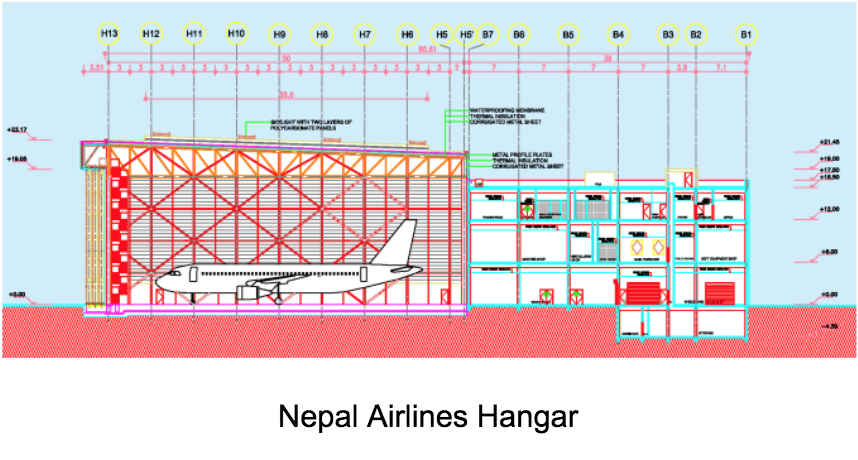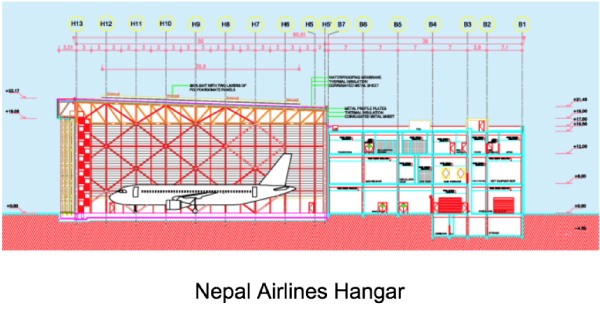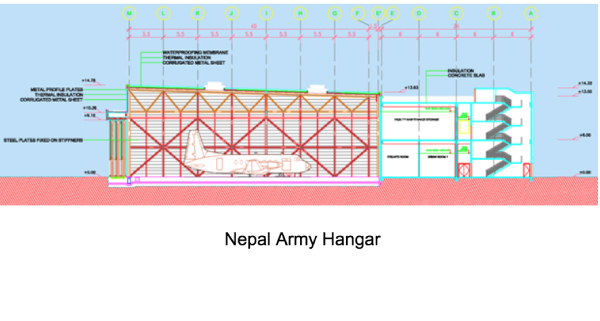


| Client: | Department for International Development (DFID) |
| Funding Agency: | DFID |
| Period: | Sep 2017 to April 2022 |
| Consulting Association: | Mott MacDonald – Oxfam and CARE (with Save and DCA)-WFP-GEOCE-CNI |
| Approx. Value of Services: | GEOCE’s part- NRs 184.4 million |
| Professional Staff Input: | GEOCE’s part-871 person months |
Salient Details
PURNIMA is implemented with objective to long-term positive change in the lives of people in earthquake affected region of April 2015 Gorkha Earthquake. Purnima rebuilt rural infrastructure, supported local government, and stimulated social inclusion and economic recovery for the most vulnerable. Purnima prioritized on reconstruction of water supply schemes, foot trails, trail bridges, and schools, which were prioritized through a rigorous planning process and assessment involving stakeholders from district, palika and community level.
The program covered 22 municipalities (Bekogadi Urban Municipality (in Nuwakot) and 21 rural municipalities (Thakre, Galchhi, Jwalamukhi, Benighat, Gajuri, Khaniyabas and Gangajamuna in Dhading district; Shivapuri, Dupcheshwor, Tadi, Myaghang, Kispang, and Surygadi in Nuwakot district; Uttargaya and Naukunda in Rasuwa district; and Ajirkot, Chumnubri, Dharche, Sahid Lakhan, Siranchowk and Gandaki in Gorkha district) in four of the worst-affected districts (Dhading, Gorkha, Nuwakot and Rasuwa) in Province 3 (Bagmati Province) and Province 4 (Gandaki Province) of Nepal. The program cost is £40 million. The program included five Output Areas:
Output Area 1 – Technical Assistance – planning and budgeting, sectoral planning, capacity building for studies, design and supervision, and GIS and Data management at Municipality level.
Achievement
⦁ Capacity enhancement for strategic implementation of policies, plans and budget
⦁ Inclusive, effective, and sustainable implementation of reconstruction and recovery efforts
⦁ Developing legislations, policies, and guidelines along with Periodic Plans, Annual Plans, WASH Master Plans, Local Government Institutional Capacity Self-Assessment (LISA) study, Revenue Improvement Action Plans (RIAP), GESI Audit including localization of COVID-19 related legislation.
Output Area 2 – Reconstruction of rural infrastructure, including water supply, foot trails, bridges, and schools.
Achievement
⦁ Access to safe drinking water – 450 water schemes constructed, 18697 tap stands built, 227,977 community people benefitted)
⦁ Rural accessibility (356.7 km foot trails constructed, which benefitted 22,637 population; 731 meters (9 trail bridges constructed benefitting 32,249 population
⦁ Access to education (5 schools with 37 classrooms constructed which benefitted 642 students)
⦁ 58,916 employed (person-days) through infrastructure reconstruction during COVID-19
Output Area 3 – Private Sector Development – interventions to address constraints to the private sector in relation to construction, including access to finance, innovation, and skills.
Achievement
⦁ 674 medium, small microenterprises supported with business re-start, continuation support, counseling and access to finance.
Output Area 4 – Challenge fund for vulnerability window, transformation window- a Challenge fund to ‘leave no-one behind’ in the reconstruction effort, and to restore and improve livelihood, food security and access to services (including housing grants and related support services) for the most vulnerable.
Achievement
⦁ Vulnerability assessment in 12 palikas
⦁ 12,732 vulnerable community members accessed social benefits and services
⦁ 20,410 vulnerable community members supported through livelihood and income recovery activities
⦁ 7,452 vulnerable community members supported with housing reconstruction process including NRA grievance registration and socio-technical assistance for housing reconstruction completion
⦁ 400 vulnerable community members are receiving in-kind support to complete their housing reconstruction
Output Area 5 – Monitoring, evaluation, and learning
Achievement
⦁ Purnima developed and implemented very efficient MIS platform in ‘mWater’ and ‘Solstice’ software to capture real time data, analyze and visualize results of all the outputs.
⦁ Purnima carried out 10 learning exercises and produced reports. Few of the learning pieces are – Local government capacity for GESI, Political Economy Analysis of Local Infrastructure Selection in Nepal, Political Economy Analysis at Gaunpalikas level and implication for TA, Access to Finance, WASH Sustainability, Assessment of Economic Recovery & Inclusion Opportunities for Vulnerable Groups, Purnima Climate Report: Climate Trends, Projections and Responses.
Amongst others, scope of services of GEOCE were:
⦁ Support the Urban and Rural Municipalities in following areas:
⦁ planning and budgeting of infrastructure projects
⦁ facilitate in developing infrastructure related master plans, Detailed Project Report (DPR) preparation, feasibility studies
⦁ developing various infrastructure related guidelines, manuals, and procedures
⦁ facilitate and ensure building codes are developed and applied
⦁ identify needs and facilitate technical training to municipality technical team
⦁ improving data management and visualization, including GIS and municipality websites
⦁ ensure GIS is used for vulnerability mapping and planning processes
⦁ to strengthen GIS, e-procurement systems
⦁ capacity enhancement for strategic implementation of policies, plans and budget
⦁ contribute to economic inclusion initiatives under ‘leave no one behind’, specially through interventions related to infrastructure
⦁ selection, quality assurance, monitoring activities of municipality infrastructure activities
⦁ participate in supervision of project infrastructures
⦁ monitoring and evaluation of program activities
⦁ organize meetings/workshops for the urban and rural municipalities and other stakeholders to develop long-term arrangements for sustainability of infrastructure specially developing capacity of the local government
⦁ financial and operation reports
⦁ Environment and Climate Change
⦁ review and update Purnima Program Environmental Guidelines document
⦁ review the existing guidelines, checklist and working method used by Purnima partners to assess the climate change/ environmental impacts and risks
⦁ provide feedback on environmental compliance in the design of the schemes
⦁ review on random basis the environmental assessment, disaster risk assessment, climate resilient water safety plan (in case of WASH schemes) and provide appropriate feedback.
⦁ School construction:
The main objective of school construction was to build back a safer learning environment to the children and teachers and safe refuge in times of natural disaster for the whole community. The interventions include new construction of school classrooms, land stabilization works, school compounds, WASH facilities and classroom furniture. The school construction program included 5 schools – Mahendra, Navajoti, Shiva, Suryodaya, Thumkidanda comprising total 10 school blocks, 37 classrooms for 642 students in 3 program districts (Dhading, Gorkha and Nuwakot).
⦁ develop and implement the timeline program, budget preparation, implementation plan and operational procedures and guidelines of school construction component under Purnima
⦁ liaise with the CLPIU, NRA (National Reconstruction Authority), DLPIU, Municipalities and other stakeholders at central and local level regarding project and technical matters
⦁ architectural, civil, and structural design of schools
⦁ work actively in NGO partner selection procedures for school construction
⦁ supervise the partner NGOs for school construction
⦁ ensure quality assurance and construction milestones
⦁ monitor costs and progress
⦁ ensure financial management and quality control for all project sites






